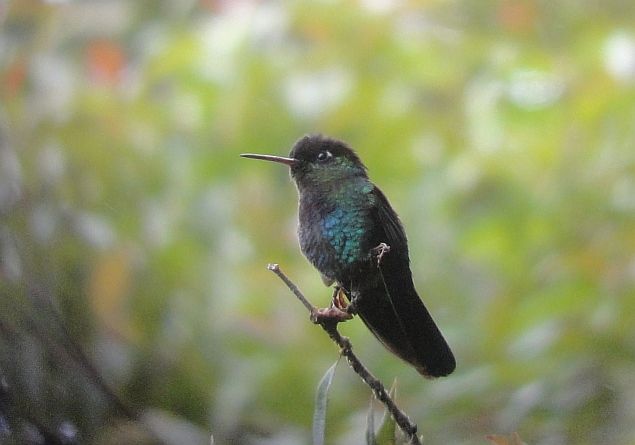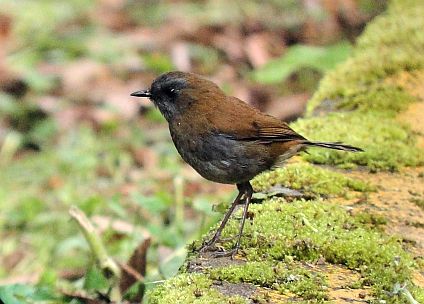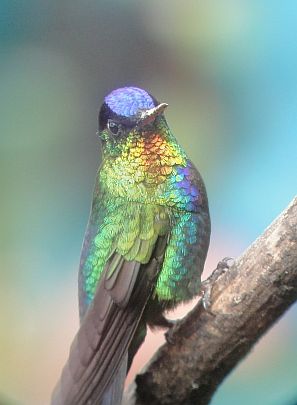Birding in Costa Rica this July? Maybe you are already here! I hope so, I mean, one of my constant hopes is for every birder to experience the avian splendor in this beautiful Central American nation. Although most folks visit in the dry season, July is our other, mini high season for birding.
July usually gives us a break in the rains and more time for birding, Even better, a lot of resident species have just finished breeding, more juvenile birds are around, and the activity…well, the bird activity is simply delish and delightful.

Mixed flocks call, scramble, and roam the foothill rainforests, quetzals are doing their spectacular thing in the highlands, and there’s lots more, always lots more Costa Rica birds to experience.
To help improve and enhance your birding trip to Costa Rica, here are five tips for “better birding”.
Don’t Worry About eBird, Just Keep Watching Birds in Good Habitat
EBird data for Costa Rica are helpful but the platform doesn’t have the final say on where to go birding. Yes, you can see where certain birds have occurred and learn about various hotspots BUT birds are not restricted to where eBirders have seen them. Whether a site is on eBird or not, the best birding is always in the places with the best habitats.
Now that doesn’t mean that eBirders aren’t visiting excellent sites. They certainly are but there are lots of additional sites with just as good or better birding. Many areas of good habitat don’t stand out or even show on eBird simply because they don’t receive much coverage.

With that in mind, don’t be shy about watching birds in Costa Rica wherever you find good forest and other suitable habitats. That’s where the birds are.
Visiting the Pacific? Scan the Ocean, Maybe Get on a Boat, and Take Pictures!
El Nino has been bringing us some seriously rare birds. The latest stars of the local birding show have been Peruvian Boobies, Blue-footed Boobies, and Sooty Shearwaters but various other species are possible too.
This is the year to scan the ocean or take a pelagic trip in Costa Rica. Scan the sea or get out on a boat and you’ll probably see something good! Since weird stuff can appear that is not in most field guides for Costa Rica, please take pictures of as many seabirds as possible. You never know, you might find some crazy rarity!

To be ready for it, get the Costa Rica Birds-Field Guide app for IOS devices. All possible seabird species are on the app, including some that have yet to be found in Costa Rica but are expected to occur. Get ready for your trip by marking target birds, studying bird sounds, and more.
Visiting the Caribbean? Scan that Ocean and Take Pictures!
The Caribbean side of Costa Rica is also turning up major records. There have been tantalizing reports of a possible Gannet, Great Shearwater was seen from shore, and a pelagic trip turned up Cory’s, Great, Audubon’s, and Manx Shearwaters! Those might be normal off North Carolina but in Costa Rica, those birds are riding the aquatic Mega train!
Although I do suspect that these and other pelagic species visit the deep waters of the Caribbean more often than expected, they are still rare birds around here (except for the Audubon’s).
Once again, you might document some serious rarity. Keep looking!
Keep an Eye Out for Red-fronted Parrotlets
Costa Rica has a bunch of parrots, parakeets, and even two monstrous macaws. Most of these cool, fancy birds are easy to see but there’s one special little species that stays out of the spotlight; the Red-fronted Parrotlet.
This miniature parrot seems to be genuinely uncommon and is the toughest member of its family to see in Costa Rica. The challenge stems from its tendency to wander up and down mountains in search of just the right food coupled with its habit of quietly feeding high in the canopy of dense rainforest.
In June and July, Red-fronted Parrotlets may move around a bit more. With that mind, keep a close eye and ear out for these birds at fruiting figs and other fruiting trees, even in the Central Valley and the Caribbean lowlands. Lately, they have been seen in the high Talamancas as well as in typical sites like the Monteverde area and El Copal.
They make distinctive, high-pitched reedy calls, are small, and show red in their wings. Good luck!
Where to See The Cotingas
No matter where you go birding in the Neotropical Region, if cotingas are in range, these birds perch right at the top of the wish list. Colorful or cool and bizarre, cotingas are a welcome sight for any birding eyes.

Unfortunately, in Costa Rica, most are not common and a few are kind of rare. With that in mind, here are some tips for seeing them in the next few weeks:
- Bare-necked Umbrellabird- Some are still in middle elevation forests but others have already moved to lower elevations. At least one has been seen in Centro Manu and there have been other sightings from Monteverde, Veragua, and the foothills of Braulio Carrillo National Park. Other good areas right now may be the San Luis Canopy, Arenal, and other forested foothill sites on the Caribbean slope as birds move between middle elevations and the lowlands.
- Three-wattled Bellbird– Several bellbirds are still on breeding grounds around Monteverde and near San Ramon but some are definitely on the move. There have been recent sightings from the Sarapiqui lowlands and other areas indicating that some of these cool, crazy birds are moving to post-breeding, lower elevations.
- Snowy Cotinga– This awesome bird is at its usual lowland rainforest haunts. Best places are lowland forests from Guapiles to Panama (especially south of Limon), Sarapiqui, and Cano Negro.
- Yellow-billed Cotinga– Although it is not listed as endangered on the IUCN list, this is definitely a mistake. The Yellow-billed Cotinga is seriously endangered and only occurs in a few areas. The most reliable site continues to be Rincon de Osa and mangroves near Sierpe. Sure, it can occur at a few other spots and you might still see it at Cerro Lodge or Carara but, tragically, that population is doomed. It has steadily declined, nothing has been done to improve habitat for it, there are further plans to destroy vital corridor habitat at the Nativa Resort, and there might only be three birds left.
- Lovely Cotinga– Always tough in Costa Rica, they might still be on breeding grounds in middle elevation forest but some are surely moving lower. A female was recently seen at Arenal Observatory Lodge. Other suitable areas include any good middle and foothill elevation forest on the Caribbean slope.
- Turquoise Cotinga– This uncommon bird is still showing at the usual spots in the General Valley, Esquipulas, and in and near the Osa.
Support a Local Conservation Project
The folks at the Ibycter project are working hard to learn more about one of the only known remnant populations of the Red-throated Carara in Costa Rica.
This formerly common species has seriously declined in Central America but no one knows exactly why.
To learn more about these birds and develop strategies to protect them, they have been observing and recording a small family of Red-throated Caracaras in northern Costa Rica. They hope to attain information about their life history and learn about their movements by place transmitters on the birds.
To learn about and help this local conservation effort, please visit the Carara site and Facebook page.
Supporting the project might help you see some very special birds in the future, and, most of all, you will be helping to conserve one of the most threatened bird species in Central America.
I could say a lot more but perhaps it’s best to finish by saying that as long as you go birding in Costa Rica, you’ll have good birding. The best birding depends on what you want to see and how you want to do your birding thang but, you’ll always see more if you, (1) get up and out there early, (2) go birding in high quality habitats, and (3) hire a good local birding guide.
To learn more about all of the best sites for birding in Costa Rica, and how to see cotingas and much more, support this blog by purchasing, “How to See, Find, and Identify Birds in Costa Rica“. As always, I hope to see you in Costa Rica!






















































